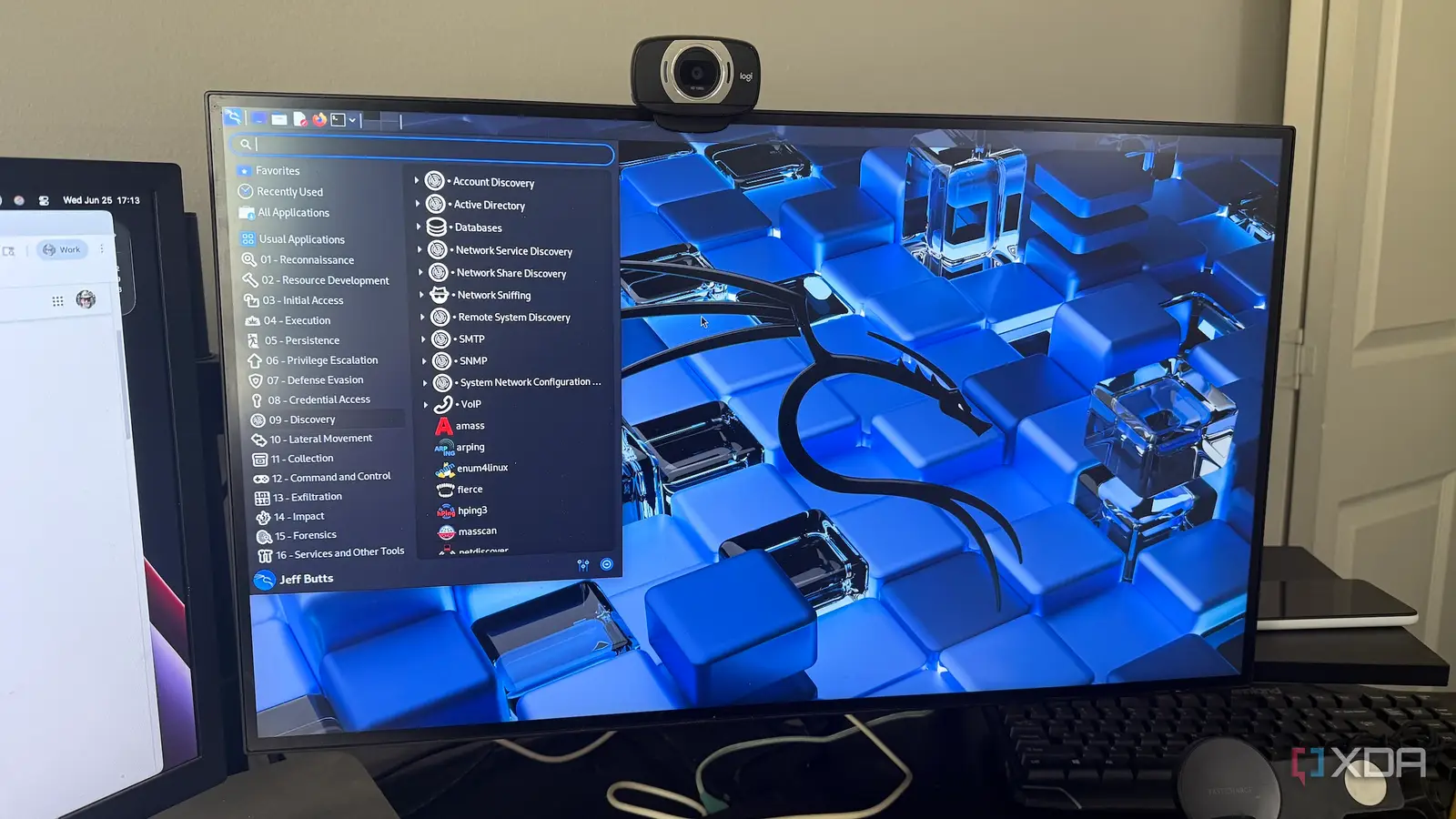Copyright XDA Developers

After I got into the Linux ecosystem with my Raspberry Pi, I began my distro-hopping journey armed with nothing more than an SBC. That interest soon devolved into an obsession after I built my home lab, and these days, I often spend hours tinkering with the coolest distributions I could lay my hands on. Kali Linux was one of the earliest distros I’ve played with, and it has only gotten better with time. While it’s not a replacement for the stability king Debian or an experimental distro like Arch, the security-centric OS is an important part of my home lab – so much, in fact, that I always keep a Kali instance just so I can play with its diverse set of utilities in my spare time. Perfect for detecting vulnerabilities in my home lab When you think of Kali Linux, you’d probably imagine a distribution designed for hackers or hardcore cybersecurity enthusiasts. While it has certain high-end info gathering, forensics, and reverse-engineering utilities, a large chunk of Kali’s arsenal of tools is centered around pen-testing, vulnerability scanning, and sniffing network traffic. This makes it the perfect companion for auditing the security of my home lab. Despite (or perhaps, because) I deploy self-hosted services and deploying virtual machines on a whim, I prefer to add as many layers of protection for my workstations, and Kali helps me out with that. WireShark, for example, can scan all the network protocols I use for suspicious packets, and I often keep it running when I work on projects that can expose my server nodes to the Internet. As much as I prefer wired connectivity, I still have to rely on wireless connections for my smart devices, and Aircrack-ng is what convinced me to harden my Wi-Fi rules. I currently use Tailscale for the majority of my remote lab needs, but on the rare occasions where I need to open ports, I rely on Hydra to check the strength of my login credentials. I also rely quite a bit on my Windows-based dev virtual machine – including automation experiments – and I remember using Evil-Winrm to locate vulnerabilities on it when I set it up initially. There’s also the uber-useful Nmap (or rather Zenmap, since I prefer its graphical interface), which lets me scan for IP addresses as well as open ports on my VMs and servers. It works really well in a virtualized environment I actually wouldn’t use it as a daily driver Aside from my home lab experiments, Kali Linux is a huge part of my coding life. During my uni days, I often used Nikto to look for any vulnerabilities in my painstakingly coded web applications, while Burp’s suite helped me learn about the intricacies of SQL injections and XSS attacks. And the best part? I’ve always stuck to good ol’ virtual machines when running exploits and scanning for vulnerabilities on my local systems. Back when I had a mere Ryzen 5 1600 powering my Proxmox node, Kali Linux worked exceedingly well despite its GUI and staggering number of tools. In fact, I’d actually recommend against using it on your daily driver. During my early college years, I was an impressionable nerd who was ecstatic with the idea of running a hacking-centric distribution. While I kept my experiments limited to my machines, the growing stability issues were too much for me. And over time, I realized I could just arm Debian with the cybersecurity tools and call it a day instead of troubleshooting some niche system service in my Kali instance breaking apps after an update. Setting up Kali on a spare machine did the trick. After getting a taste of Proxmox, I shifted to a VM, which works just as well once I’ve enabled a handful of settings. I wouldn't recommend going too wild with it Kali Linux experiments can backfire if you're not careful One final warning before I stop gushing over Kali Linux. Although I’ve hardened my current Kali virtual machine using all the knowledge I’ve gained over the years, I must admit that there are certain projects I’d never attempt. Sure, a virtualized instance can provide better security and, assuming you have as many backups as I do, have smoother recovery if things go wrong. However, the infinite recesses of the Internet are home to malware that can bypass a virtual machine and attack the host machine. While I have contemplated the idea of building my own malware-testing lab, it’s something I wouldn’t run unless I have more experience in this field. Likewise, a honey pot sounds intriguing, but I’d rather not set it up on my Kali VM. Instead, I prefer to use it as my pentesting and vulnerability scanning companion – and occasionally as a cybersecurity mentor for my application and web development tasks.



